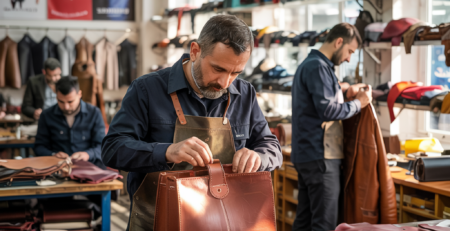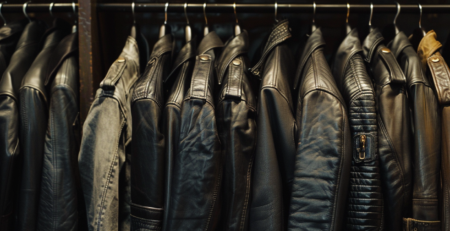Leather Jacket Production: our process
Introduction: Leather jackets are timeless fashion items that never go out of style. They are not only fashionable but also durable and versatile. If you are in the business of leather jacket production, it’s important to ensure that your products are of the highest quality. In this article, we will discuss some tips and tricks to help you enhance the production process of leather jackets.
- Selecting the Right Leather: The quality of the leather you choose plays a significant role in the overall quality of your leather jackets. Opt for high-quality, genuine leather that is soft, supple, and has a consistent grain pattern. Different types of leather, such as cowhide, sheepskin, and lambskin, have distinct characteristics, so choose the one that suits your design and target market.
- Preparing the Leather: Before you start cutting and stitching the leather, it’s essential to prepare it properly. Ensure that the leather is clean and free from any imperfections. Trim off any uneven edges and remove blemishes, if any. Additionally, moisturize the leather with a suitable conditioner to prevent it from becoming dry or brittle during the production process.
- Pattern Making and Cutting: Create precise patterns for your leather jackets to ensure accurate cuts and a perfect fit. Use a high-quality leather cutting tool or a laser cutting machine to achieve clean and precise cuts. Be mindful of the direction of the leather grain while cutting to maintain consistency in appearance.
- Stitching Techniques: Stitching leather jackets requires specific techniques to ensure durability and a polished look. Use a heavy-duty sewing machine with a leather needle and strong nylon or polyester thread. Consider using a double-stitching method for critical areas to reinforce seams. Use leather-specific adhesives sparingly to prevent excess glue from seeping out and leaving visible marks.
- Hardware and Accessories: Pay attention to the selection and placement of hardware and accessories, such as zippers, buttons, and buckles. Choose high-quality hardware that complements the overall design and withstands regular use. Ensure proper alignment and secure attachment of these elements to maintain the integrity of the leather jacket.
- Quality Control: Implement a robust quality control process at every stage of production. Regularly inspect the leather for flaws, such as scratches, discolorations, or uneven dyeing. Check stitching for strength and accuracy. Perform fit tests to ensure the jackets meet the desired size and fit requirements. A thorough quality control process will help you deliver superior leather jackets to your customers.
- Finishing and Packaging: Give attention to the finishing touches of your leather jackets. Smooth out any wrinkles or creases and apply a suitable leather finish to enhance the appearance and provide protection. Properly fold and package each jacket in a way that preserves its shape and prevents damage during transportation.
Conclusion: Producing high-quality leather jackets requires attention to detail, careful craftsmanship, and the use of premium materials.








